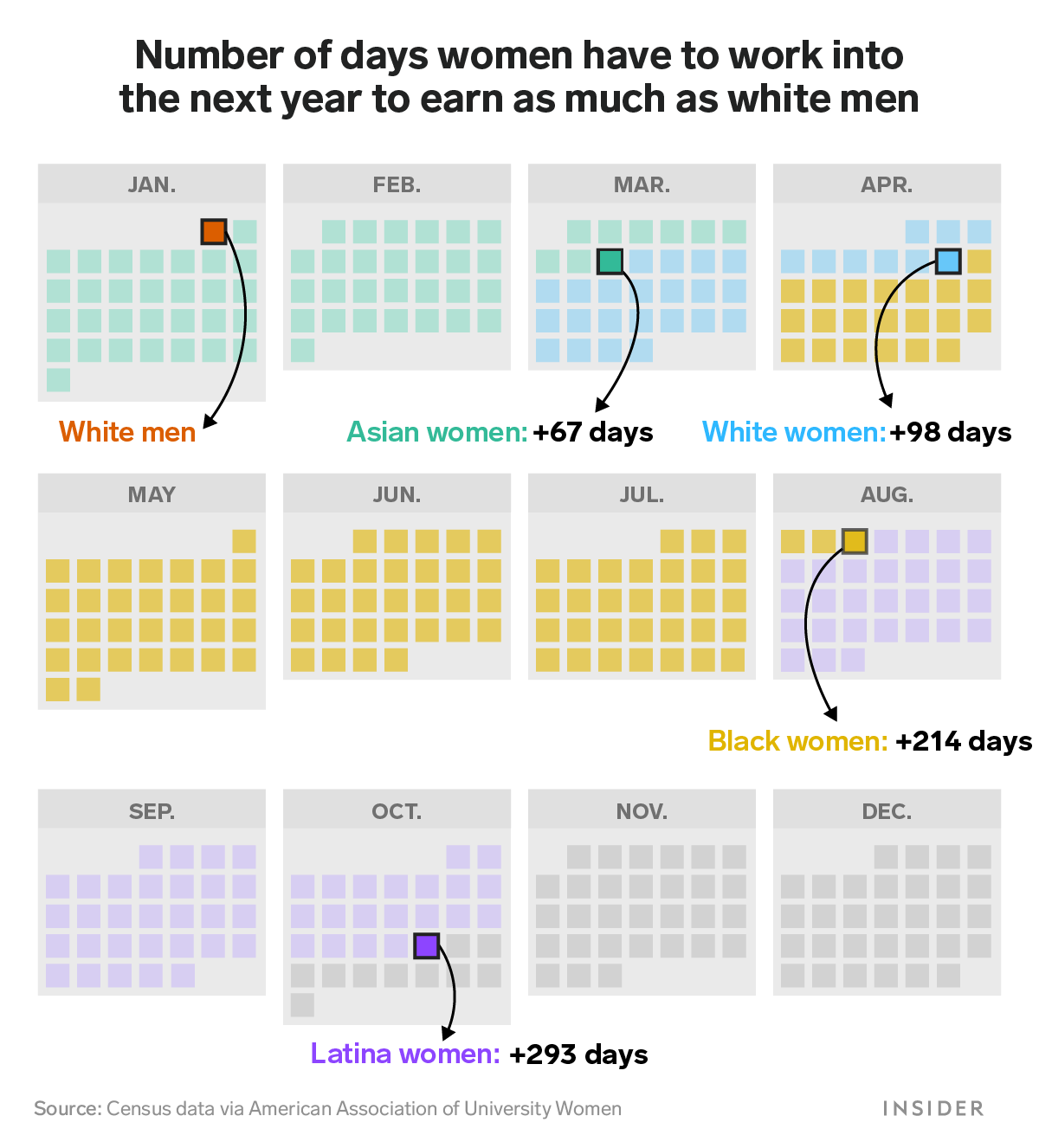
- Latina Equal Pay Day is October 21.
- This represents how much longer it takes Latinas to earn what non-Hispanic white men earned just last year.
- The National Women's Law Center wrote in a fact sheet that this loss of earnings make it hard for Latinas to grow their wealth.
October 21 is Latina Equal Pay Day, or the approximate day it would take for Latinas to earn what non-Hispanic white men made in just 2020. This means that Latinas had to work almost 22 months, or nearly 10 extra months in 2021, to earn what non-Hispanic white men did in 2020.
Working Latinas have a pretty large gender pay gap relative to white men. Latinas working full-time, year-round made 57 cents for every dollar non-Hispanic white men working full-time, year-round made, according to the National Women's Law Center (NWLC)'s analysis of median earnings data from the Census Bureau.
The Institute for Women's Policy Research (IWPR) notes in its fact sheet about Latina Equal Pay Day that Latinas "have the lowest earnings of any major race/ethnicity and gender group." Median earnings for Latinas working full-time, year-round in 2020 were just $38,718 – or $28,911 less than non-Hispanic white men – according to the Census Bureau's Current Population Survey Annual Social and Economic Supplement cited by IWPR.
These lost earnings really add up over time. NWLC reported that Latinas are losing out on over a million dollars in earnings over a 40-year career because of this pay gap. NWLC added that this lost annual earnings could have helped pay for things like 11 months of childcare.
"These lost earnings not only leave Latinas without a financial cushion to weather the current crisis, but also make it harder for them to build wealth, contributing to the racial wealth gap and barriers to Latinx families' economic prosperity," the National Women's Law Center wrote.
Latinx workers overall were disproportionately affected by the pandemic because many work in industries that were hard hit during the pandemic, such as leisure and hospitality. The labor force participation rate for Hispanic or Latina women has increased from a year ago but is still below the pre-pandemic rate.
Equal Pay Day varies by race and ethnicity. The following calendar shows the approximate extra days it would take for women of different races and ethnicities to earn what non-Hispanic white men made the year before:

According to IWPR, there isn't just one thing that explains Latinas low earnings. Factors include job discrimination in both being hired and being promoted and the kinds of sectors Latinas tend to work in.
"Latinas are overrepresented in women-dominated health care, care work, and cleaning occupations, essential jobs that pay much less than men-dominated occupations at similar levels of training and education," IWPR wrote.
Within those sectors, Latinas are even earning less than white men in these same occupations. For instance, using five-year average wage data (2014-2019), the left-leaning Economic Policy Institute reports that Hispanic women working as registered nurses make an average of $30.33. That is $4.54 less than what the average non-Hispanic white man makes in this job.
Without any change, the closing of this pay gap wouldn't be seen anytime soon - at least not in this lifetime. IWPR reports that it would take 185 years to close this particular gender pay gap.
"As we recover from the pandemic, we cannot go back to February 2020, when it was 'normal' to pay Latinas 57 cents on the dollar," NWLC wrote. "We need a recovery that addresses our long underinvestment in economic and social infrastructure and the inadequate workplace protections that left Latinas stranded at the intersection of racial and gender inequities laid bare by COVID-19."

